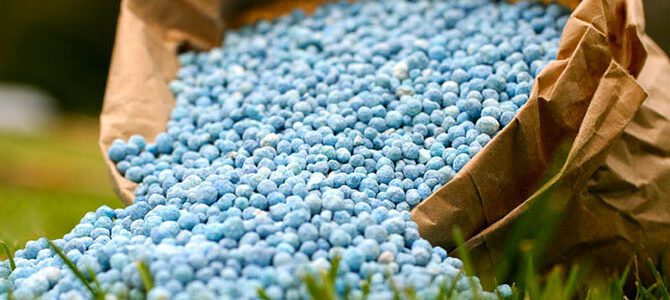
Ukrainian fertilizer market in 2022 will sag by about 40-55% – from 4.75 million tons to 2-2.9 million tons: it hit its bottom in early summer and began a rapid recovery, Oleg Arestarhov, director for corporate communications at Group DF, wrote in a column for Interfax-Ukraine.
According to him, in 2022 the revenue of farmers and solvent demand for fertilizers has decreased significantly. The main reasons were the increase of selling prices for fertilizers due to high gas prices, the reduction of cultivated areas by 14-16% because of the war and land mines, the direct losses associated with the destruction of warehouses, the withdrawal of the occupants of grain and stealing their agricultural equipment, as well as export restrictions on sales.
According to the representative of Group DF – the largest producer of nitrogen fertilizers in Ukraine, the consumption market of ammonium nitrate, although the decline from 1.8 million tons to 600 thousand – 1 million tons, this fertilizer is still the biggest demand in the country.
Arestarhov noted that a very large decrease in consumption – almost twice – is expected for complex fertilizers because of the significant shortage of phosphorus and potassium. This is associated with the blocking of fertilizer supplies from Belarus and the closure of maritime shipping.
The specialist estimates a drop in consumption of ammonium sulphate to 210-250 thousand tons from 490 thousand tons last year, UAN (carbamide ammonium nitrate) – to 400-600 thousand tons from 1.3 million tons, carbamide – to 330-410 thousand tons from 1.12 million, NPK, DAP – to 620-660 thousand tons.
He specified that an important new global trend, affecting the structure of fertilizer consumption in the world market – is a significant drop in urea prices in the second half of the year, which reduces the attractiveness of ammonium nitrate, which has a lower concentration of nitrogen. According to Mr. Arestarhov, according to some reports, the port of Constanta (Romania) currently has accumulated about 120 thousand tons of urea from all over the world, effectively making it a new European hub, where traders buy urea at the most reasonable price, without reference to a specific producer. However, Ukraine has not been affected by this trend so far: having obvious logistical advantages and rather acceptable domestic prices for gas, Ukrainian producers have preserved urea production and offer it to Ukrainian consumers at a competitive price.
As to forecasts Arestarhov paid attention to the change in the structure of consumption of mineral fertilizers by farmers: in 2023, oilseeds and soybeans may gradually replace cereals, which showed not the best profitability, while the determining factor for the structure of crops are the prices for grain and oil on world markets.
A Group DF representative pointed out that two plants of the Ostchem holding, Cherkasy Azot and Rivneazot, continued operating under war conditions, while Odessa Port Plant and Dniprozot have temporarily pulled out. Production was concentrated on the production of ammonium nitrate, UAN, IAS (lime ammonium nitrate) and compound fertilizers.
According to Mr. Arestarhov, UAN produced at Rivneazot was the most successful export product: 170.6 thousand tons of UAN were exported during 11 months, and the main buyers were European agrarians/traders from Romania, Hungary, Slovakia, Poland and Moldova.
Urea was exported 64.8 thousand tons, UAN – 29.6 thousand tons, ammonium nitrate and ammonia – only 11 thousand and 2.3 thousand tons, respectively. According to the expert, the reasons for the sharp decrease in exports are the priority to supply Ukrainian farmers and the logistical and administrative constraints on exports. Ukrainian fertilizer producers got a logistical advantage over fertilizer importers, as they are physically closer to customers, he added.
“2023 was, to put it mildly, very disappointing for importers: half a year there was almost no import of fertilizers to Ukraine, and now the number of imported fertilizer corridors across the entire spectrum of products has decreased significantly and has not recovered Among the imported fertilizers, which are still gradually imported – ammonium nitrate, UAN, urea. But the war will continue to block most imports,” stated Arestarhov.
Among other features 2022 on the Ukrainian fertilizer market, he called the active introduction of grain exchange schemes due to the lack of farmers working capital needed for the sowing season 2023.
According to the representative of Group DF, there is a significant pent-up demand for fertilizers on the market and great potential for growth in January-February 2023, which can be additionally assisted by the state’s help in concessional lending.
“In fact, the fall campaign-2022 was held on old stocks that remained in storage since the spring. The market heated up only in late fall – early winter – the active buying of fertilizers and the formation of the necessary reserves for the spring of 2023 began,” he wrote. The expert added that demand was fueled by price cuts by domestic producers, primarily for ammonium nitrate and UAN, in anticipation of a significant increase in sales.